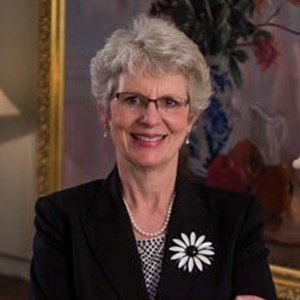It might be presumptuous of me to suggest that “Presentation of the Lord” is the wrong name for the feast we celebrate on Feb. 2. Not that I don’t appreciate the faith it took for Mary and Joseph to hand over their newborn to strangers. I remember well bringing my newborn to church for the first time. I suggested we put a sign on him that read “Keep Your Germy Hands to Yourself!”
My wife was one of the pastors, so everyone wanted to touch -- and hold -- our baby, even the wobbly 90-year-old lady standing in the narthex. It’s nerve-racking work to present one’s child in the temple.
Still, I think the name “Presentation of the Lord” points us to the wrong action in the scene in Luke 2. But there is a name that points us in the right direction.
In the 6th century, the celebration of this feast spread from Constantinople throughout the Eastern Church under the name “The Meeting,” pointing to the meeting between Christ and Simeon. And it’s Simeon’s action -- more passive than active, his waiting and receiving -- that serves as a model for the Christian life in general and for Christian leadership in particular.
Considered allegorically, this feast shows us two ways of embodying the Christian life: the active way and the contemplative way. Mary and Joseph model the active way. They get the job done by the book. If Leviticus says show up at the temple on the 40th day, they show up. They keep their appointments; and for many of us living the active life, there are many appointments to keep.
Our prayer lives are not so different. We pray by the book. I sometimes set a timer so my quiet time is exactly 20 minutes, which the centering prayer gurus say it should be. When we do our lectio divina, we self-consciously move from lectio to meditatio to oratio to contemplatio, just as we were taught.
And then there are the great teachers of prayer who remind us again and again that no method, however strictly followed, can bring us to our true end in God. True contemplation is always a gift of God’s grace and can only be received. If living and praying by the book do anything, they dispose us to receive. That’s all.
Old Simeon is the picture of this contemplative way, standing in the temple with his arms outstretched -- like the old ladies at my church -- waiting to receive the Christ.
Maybe we should call this day, not “Presentation of the Lord,” but “Reception of the Lord.” That name might remind us of the contemplative heart of Christian life and leadership.
I’m often tempted to lead the way I live -- by the book. When retired Harvard Business School Professor John Kotter tells us to lead change by following an eight-stage process, I do it. I write the one-paragraph vision. I gather leaders. I create a sense of urgency. I communicate the vision. And so on. I do what I’m told.
That is, until Feb. 2 -- the feast of Simeon’s receiving Jesus. For Simeon reminds us to stop, wait and stretch out our arms. He reminds us that we don’t always know where we are going ahead of time and we don’t always know what the right vision looks like until it arrives. He reminds us that the next source of inspiration, the next great idea or the next most faithful step for an organization, might come from the unlikeliest of places.
He reminds us of leadership’s contemplative heart.
I saw this kind of leadership in December when our choir and youth went caroling. They had a schedule that took them to several nursing homes and the Veterans Affairs hospital. At the VA, a disheveled-looking group of veteran-patients had gathered in the recreation room. The carolers lined up facing the patients, as they had at each stop, and sang. Then one of the carolers noticed that the veterans were trying to sing along, so she suggested a deviation from the usual.
“Why don’t we just go out there and stand next to them and share our music and become one choir?” she suggested. That wasn’t in the plan, but they did it anyway. And the “us” and “them” disappeared. The carolers and patients became one choir rejoicing at the birth of the very one whom Simeon would receive in his arms.
The woman who made this suggestion is an active, busy woman. But she’s also committed to cultivating a contemplative way of life in the midst of her activity. And so she was disposed to receive and to see in that situation an unexpected possibility.
That’s leadership in the moment. It wasn’t the work of a strategic plan or the introduction of a well-thought-out idea at the right time; it was an openness to receive the new as it presented itself. The leadership literature calls it “emergent” leadership. I call it “open-armed-old-lady-in-the-narthex” leadership.
Or simply, leadership Simeon-style.









